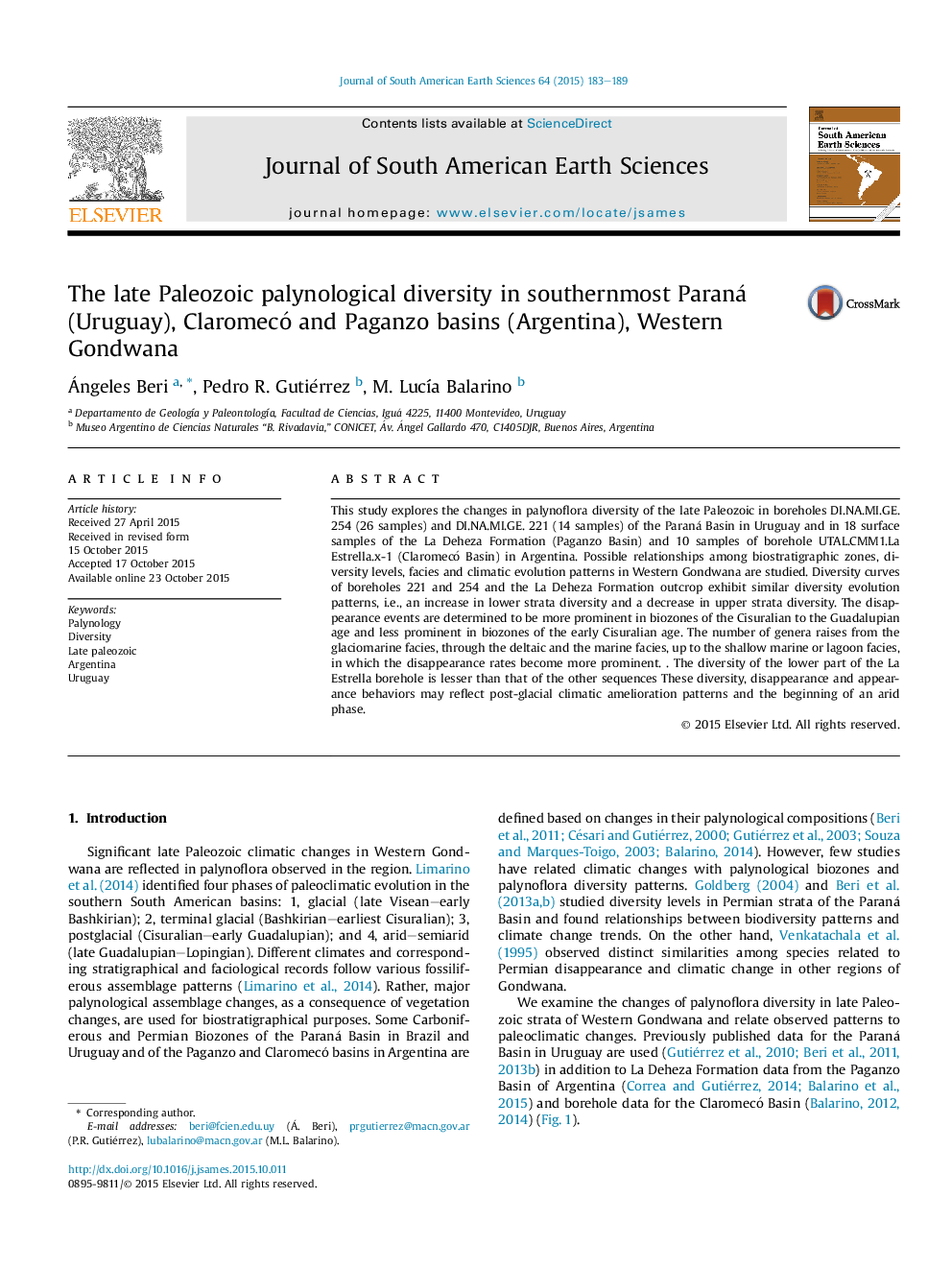| Article ID | Journal | Published Year | Pages | File Type |
|---|---|---|---|---|
| 4682117 | Journal of South American Earth Sciences | 2015 | 7 Pages |
•The pattern of palynodiversity is similar in different areas in Western Gondwana.•There is a relationship between palynological biozones and diversity.•There is a relationship between facies and palynodiversity.•There is a relationship between paleoclimate and palynodiversity.
This study explores the changes in palynoflora diversity of the late Paleozoic in boreholes DI.NA.MI.GE. 254 (26 samples) and DI.NA.MI.GE. 221 (14 samples) of the Paraná Basin in Uruguay and in 18 surface samples of the La Deheza Formation (Paganzo Basin) and 10 samples of borehole UTAL.CMM1.La Estrella.x-1 (Claromecó Basin) in Argentina. Possible relationships among biostratigraphic zones, diversity levels, facies and climatic evolution patterns in Western Gondwana are studied. Diversity curves of boreholes 221 and 254 and the La Deheza Formation outcrop exhibit similar diversity evolution patterns, i.e., an increase in lower strata diversity and a decrease in upper strata diversity. The disappearance events are determined to be more prominent in biozones of the Cisuralian to the Guadalupian age and less prominent in biozones of the early Cisuralian age. The number of genera raises from the glaciomarine facies, through the deltaic and the marine facies, up to the shallow marine or lagoon facies, in which the disappearance rates become more prominent. . The diversity of the lower part of the La Estrella borehole is lesser than that of the other sequences These diversity, disappearance and appearance behaviors may reflect post-glacial climatic amelioration patterns and the beginning of an arid phase.
Graphical abstractFigure optionsDownload full-size imageDownload as PowerPoint slide
